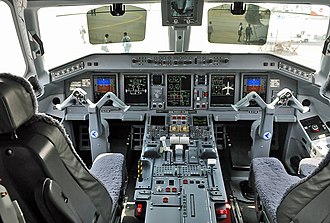The Embraer E-190F aircraft’s passenger-to-freighter conversion variant just received its Federal Aviation Administration (FAA) certification this past september, three months after first obtainaing clearance from Brazil’s National Civil Aviation Agency (ANAC).
Building on the reliability and operators appeal of the E-jets passenger variants, Brazil-based Embraer is attempting to carve a niche converting its E-Jet passengers aircraft into dedicated freighter variants. Comparing the passenger market and its freighter counter-part, Embraer recently determined that a gap in loading capacity and mission capabilities persisted between much larger jet-powered aircraft types such as the Airbus A320 and Boeing 737, and smaller turboprop-powered aircraft such as the ATR-42/72 family. Yet as in the passenger segment where Embraer has been able to ably position its aircraft, it is now betting that a similar niche can also be fully exploited in the freighter segment very cost-effectively by converting passenger aircraft into freighters.
This proposition is supported by convincing numbers: in terms of volume, the E-Jets dimensions allow it a 40% capacity advantage against large cargo turboprops (ATR-42/72) against whom they are also able to fly as much as three times further, considerably faster. Yet, when comparing the E-Jets to larger jet-powered narrowbody aircraft, a 15%-30% operating cost advantage can be observed against the A320/Boeing 737. With its maximum structural payload of 13.5 tonnes, the E-190F dominates the ATR-42/72 freighters whose payload do not exceed the 6 tonnes. Here we see that the E-190F cargo capacity fits comfortably below the A320P2F (passenger-to-freighter) 21 tonnes payload and the Boeing 737NG converted freighter 16 to 20 tonnes payload, against whom the E-190F presents, respectively 15% and 23% lower operating costs (*).
Expecting a stellar commercial performance for this year, Embraer results have already posted 57 commercial jets delivered during the third quarter, up 33% from the same period last year. As a result, the company is looking to invest more aggressively in supporting operators of its E-jets in the US market. Accordingly, a latest initiative announced on October 15th will see the launch of a $70 million project to develop a new Maintenance, Repair and Overhaul base at Perot Field Alliance Airport; in Fort Worth, Texas. The project which is set to complete by 2027 will add 53% more hangar capacity for E-Jets servicing and is expected to create as many as 250 new skilled aviation jobs in the area. According to the company announcement, the new Fort Worth service center will be added to Embraer’s global network, which already includes 80 authorized centers and 12 owned service centers around the world.
